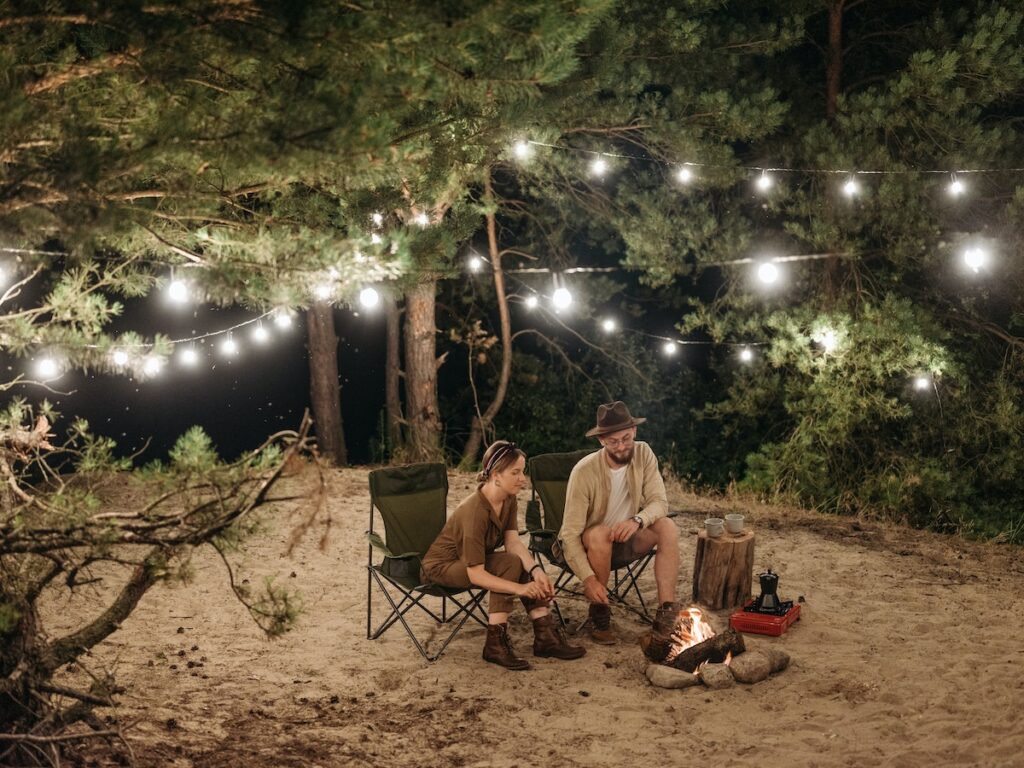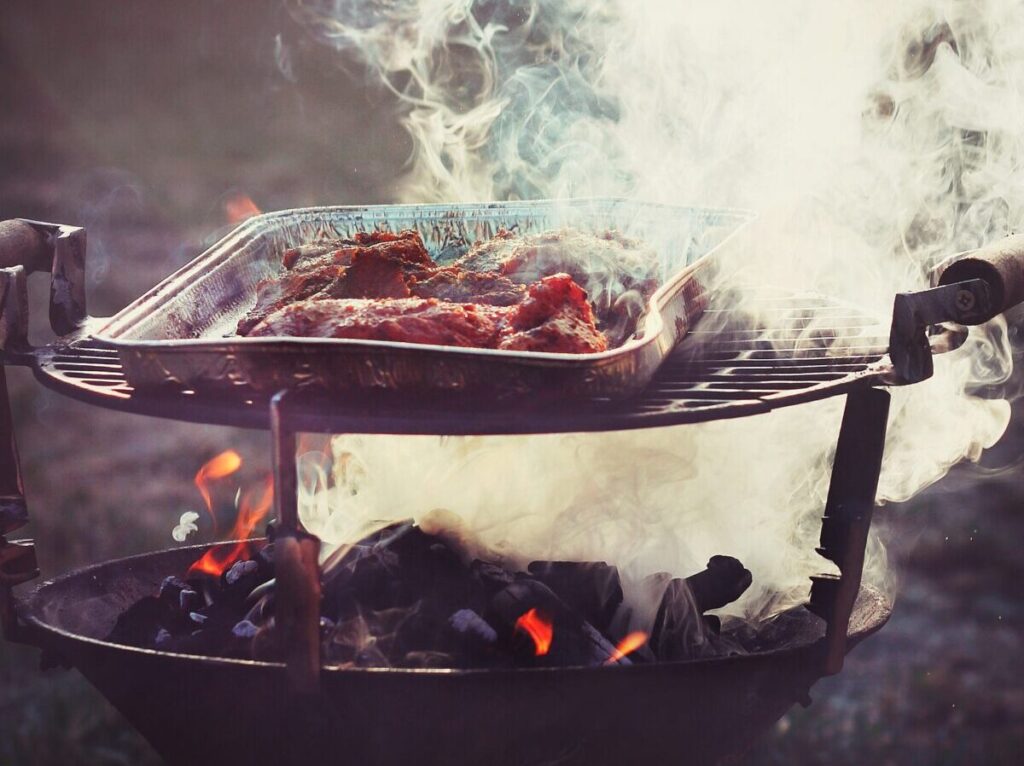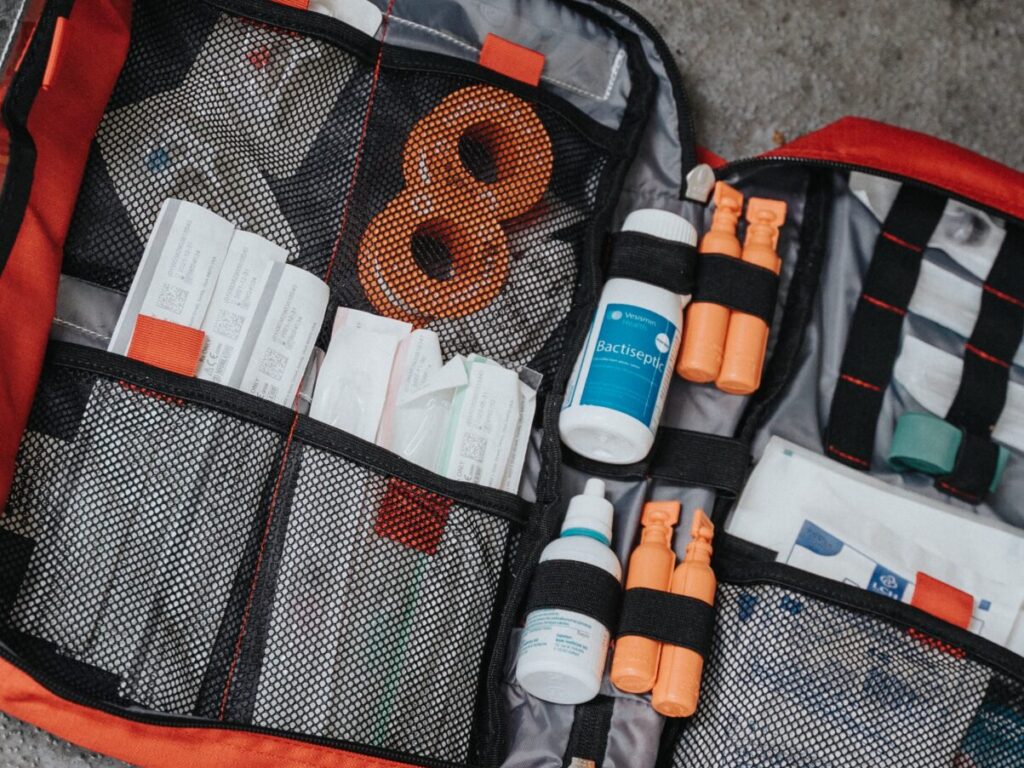How to make your camp safe
Although camping is great fun, it’s not without its dangers. In this article we’ll help you with tips on how to make your camp safe.
Seeing as you’re spending so much time outdoors, and living in close quarters with flammable gases, fire and appliances it’s good to know how to use your camping equipment safely and keep a few things in mind to keep everyone in your camping group safe and happy.

Checking for dangers
Before it gets dark on your first night, make sure to check the surrounding area for any dangers, such as nearby rivers or cliff faces. This is firstly to orient yourself, and get a better sense of the nearby area, as well as to prevent any kids from running off and getting themselves into a dangerous situation.
Check here for loads more tips on When camping after dark – How to light up your pitch.

Fire safety
Make sure your fire is contained is an important part of campfire safety. You could use a man-made firepit, which lots of campsites provide for you. You could even phone them up beforehand- checking that they allow fires and whether they have a firepit for each pitch.
But if they don’t, then you can make your own fire on bare earth in a circle of stones. Set it up 4 meters away from any bushes or tents, and also make sure there aren’t any low-lying branches that could catch alight.
If you use a match to start the fire, throw it into a bucket of cold water, or back into the lit fire.
Remember to never use any flammable fluids or gases to start your fire.
Also keep a bucket of water and a spade near so that you can throw water or shovel dirt onto the fire if it starts to spread.

Never leave a fire unattended, any gust of wind could make sparks fly, and potentially make the fire spread if no one is there to put them out. Instead, if you’re going to bed or going away from your pitch, pour water on the fire then stir the coals to get any hot embers to the surface, and pour water on them again.
For loads more advice on how to stay safe around the fire, especially when camping with children, check out my general guide to Campfire safety.
Keep the camp area well lit
Having lots of lights in your pitch is an especially great idea if you’re camping with kids or dogs.
It means that at night-time you can keep track of everyone a lot more easily, especially kids or dogs who could run off or get lost. It also prevents you losing any of your belongings- camping cutlery always seems especially easy to misplace when its dark.
A well-lit pitch also means people are less likely to trip over objects on the floor and guy ropes. But if you want to reduce the chances of people tripping up even more then why not twist fairy lights along the guy ropes, making them even harder to miss. There’s lots fun in The Magic of Camping After Dark.
It is also a great way to make your pitch look beautiful- if you want loads more tips on how to glam up your pitch, have a look at Camping Romance – Accessorise Darling.

Carbon monoxide dangers
Seeing as you’re using lots of fuel burning appliances camping, carbon monoxide can prove a very significant risk. It can lead to headaches, dizziness and can even be fatal.

To prevent carbon monoxide poisoning make sure to NEVER use barbecues, fuel burning appliances and heaters in an enclosed space, such as a tent or awning. This is because these appliances release carbon monoxide, which can build up when used inside.
The symptoms of carbon monoxide poisoning include headaches, dizziness, sickness, tiredness, confusion, shortness of breath and vertigo. So, if you or anyone in your campsite has these symptoms, take everyone outside into fresh air and away from any appliances. Also, investigate the possibility of a carbon monoxide leak, getting a qualified expert to check your camping equipment.
Extreme winds
When you’re camping, especially by the coast or in areas known for more extreme weather conditions be sure to keep up to date with the weather forecast.
Remember that it can change last minute, also make sure that you will be notified if there are any local weather warnings. In the case of strong winds, orient your tent so the narrow end is facing the wind, make sure everything is secured down so none of your belongings can be blown away, and set up all your guy ropes properly to make your tent as secure as possible.
If it isn’t raining, then you could leave out the fly when putting up the tent, so the wind has less to blow into, and even open the tent up near the top to allow air to flow through. Also be sure to bring a tent repair kit just in case it gets damaged at all.
If there is a thunderstorm, then find a house or permanent structure to shelter in- you could even stay in a hotel for the night. If none of this is possible, then a car will do- but don’t try and ride it out in your tent as this won’t be a safe enough place to shelter if a thunderstorm does hit.

The other end of the spectrum – too hot to camp
If you’re camping in extreme heat, then be sure to top up your water bottles regularly, making sure everyone stays hydrated as it is easy to lose vital liquids when you’re sweating in the heat. Set up your tent in an area that is in the shade for as much of the day as possible or use an awning to make a shady area.
This a great reason to book at a forest campsite for the woodland camping under the trees.
Also make sure your tent has great ventilation to reduce the chance of a humid night in the tent.
Camp near water so that you can take refreshing swims whenever the heat gets too much.
Also pack a hammock, which is a much cooler alternative to the sleeping bag if you are able to sleep outside.

Tick protection
Ticks are not everywhere, but if you think you’ll be camping somewhere they may be prevalent, then make sure to spray everyone with bug spray at the beginning of the day and before sitting around the campfire in the evening. This includes the dog- bring along some canine tick protection as well!
Wearing shoes that cover the feet, long sleeved t-shirts and trousers is also a great way to prevent tick bites. Remember that ticks are often found in long grasses, or areas that livestock have grazed, so check family members and dogs for ticks after spending time in these areas.
In your first aid kit I would recommend bringing tick removal tweezers just in case anyone does get a bite.
Check out my general guide to What to pack in a camping first aid kit.

Hopefully this will help you and your family to stay safe on your camping trip. As long as you remember a few key tips, your fire safety, and keep track of the weather forecast, you will be able to enjoy your holiday, safe with the knowledge you can deal with whatever camping throws at you.
Here’s me signing out and thank you so much for reading.
Lily Crooke / Environmental and Recreational author
